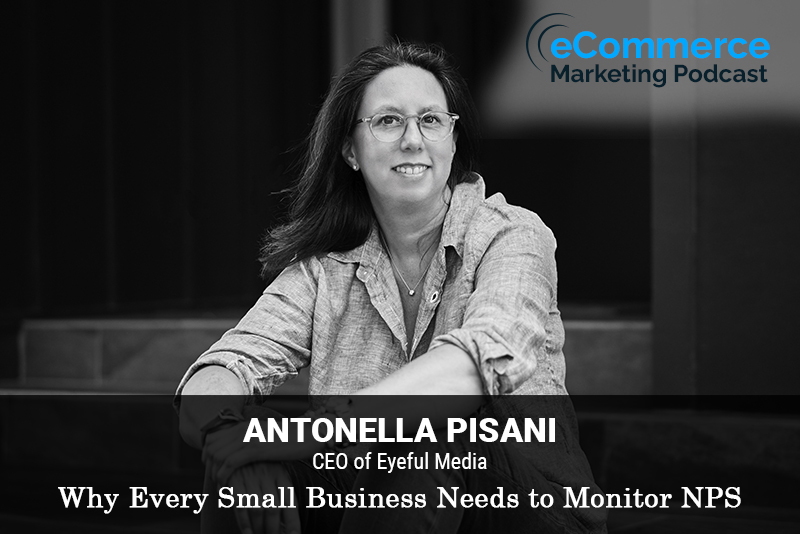
The eCommerce Marketing Podcast walks you through everything that goes into ecommerce marketing — from inbound marketing to paid advertising to conversions. Learn the strategies top marketing experts use to grow their businesses.
Antonella Pisani is the founder and CEO of Dallas-based Eyeful Media, a digital marketing and consulting firm focused on performance marketing and digital strategy for mid-market companies.
In this episode, you will learn
What is a net promoter score and why is it important?
What tools and resources are required for a brand to calculate their net promoter score?
What are the primary benefits for calculating the net promoter score?
What are various ways that a brand can poll customers to calculate the score?
Example of an ecommerce brand that has a high net promoter score and how did they achieve this
For show transcript and past guests, please visit https://www.ecommercemarketingpodcast.com
Or on YouTube at:
https://www.youtube.com/channel/UC3PgT0NOGzpdPGQtBK0XLIQ
Guest Links:
Follow Arlen:
Twitter: https://twitter.com/askarlen
Facebook: https://www.facebook.com/arlen.robinson.7
Instagram: https://www.instagram.com/arlenyohance/
LinkedIn: https://www.linkedin.com/in/arlenrobinson/
Past guests on the ecommerce marketing podcast include Neil Patel, Nemo Chu, Luke Lintz, Luke Carthy, Amber Armstrong, Kris Ruby and many more.
Thanks for listening. Be sure to subscribe and leave a review.

Title: Understanding and Utilizing Net Promoter Score in E-commerce – with Antonella Pisani
Guest: Antonella Pisani, Founder and CEO of Eyeful Media
Host: Arlen Robinson
Summary: In this episode of the eCommerce Marketing Podcast, Arlen Robinson interviews Antonella Pisani, founder and CEO of Eyeful Media, a digital marketing and consulting firm. Antonella shares her extensive experience in digital marketing and discusses the importance and implementation of the Net Promoter Score (NPS) for e-commerce businesses. The conversation covers what NPS is, how to track it, and how to use it to improve customer satisfaction and business performance.
Key Takeaways:
- [00:03:54] What is Net Promoter Score (NPS):
- NPS measures customer satisfaction based on a simple survey question: “Would you recommend us to a friend or family member?”
- Scores range from 0 to 10, with 9-10 being promoters, 7-8 neutral, and 0-6 detractors.
- [00:06:47] Tools and Resources for NPS:
- Use tools like SurveyMonkey, Typeform, Qualtrics, or Ask Nicely to collect and analyze NPS data.
- Tools can help segment data and understand customer feedback better.
- [00:10:20] How to Interpret and Use NPS Data:
- Benchmark your NPS against industry standards.
- Use customer feedback to understand the reasons behind the scores and take actionable steps to improve.
- [00:13:51] Integrating NPS with Other Feedback:
- Lead with the NPS question and follow up with more detailed questions based on the response.
- Use conditional logic in surveys to gather more insights from promoters and detractors.
- [00:18:57] Examples of Companies Using NPS:
- Peacock Alley improved their NPS by 5 points by segmenting data and addressing specific customer concerns.
- Immediate feedback from detractors can help resolve issues quickly and improve overall customer satisfaction.
Guest Info:
- Antonella Pisani
- Founder and CEO of Eyeful Media and Provision Promise
- Website: Eyeful Media
- LinkedIn: Antonella Pisani











